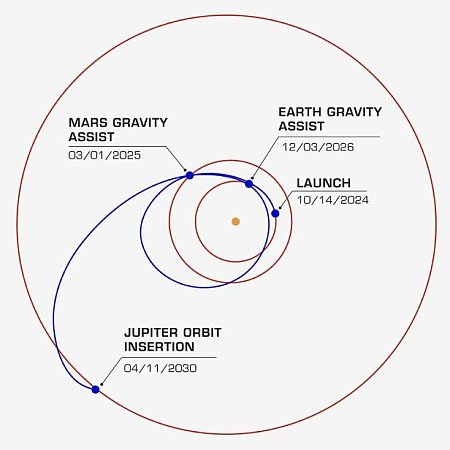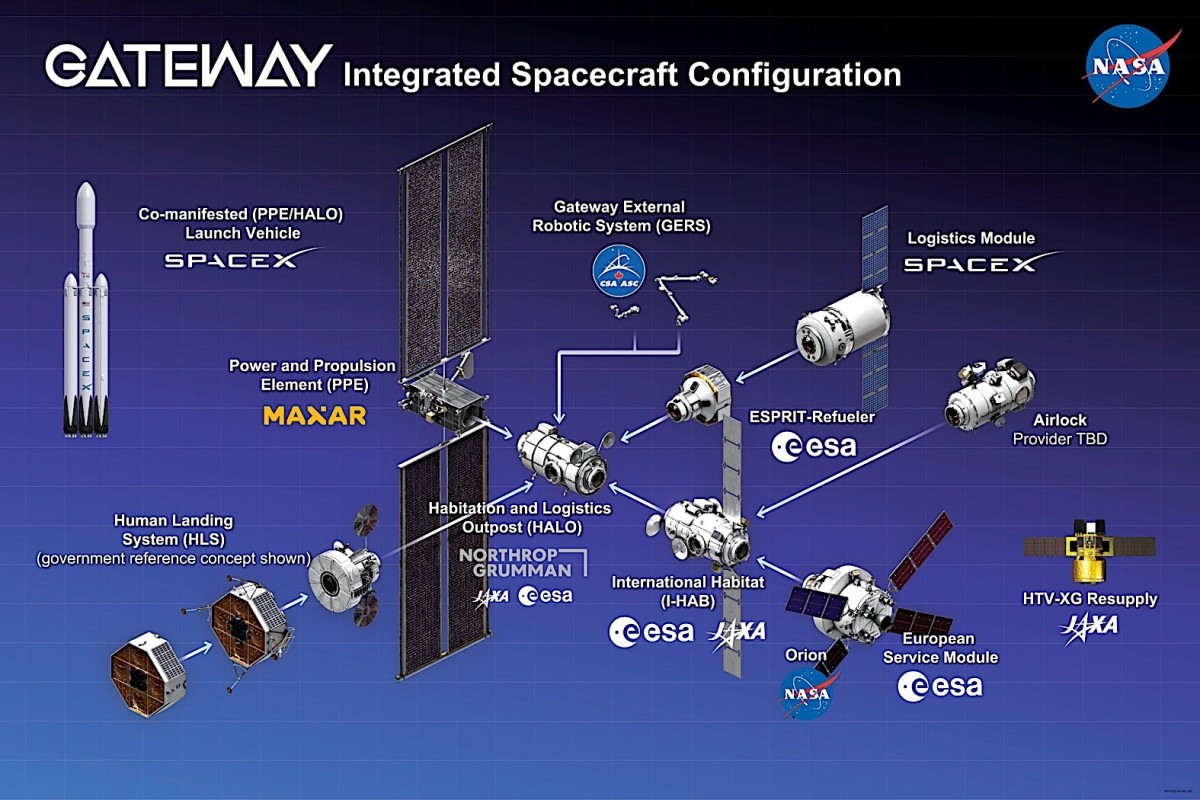
Click for full resolution. For original images, go here and here.

Click for interactive map.
The panorama above, reduced and sharpened to post here, was created by me from two photographs taken on February 23, 2025 (here and here) by the left navigation camera on the Curiosity rover on Mars.
The overview map to the right provides the context. The blue dot marks Curiosity’s present position, with the white dotted line its past travels and the red dotted lines its planned route. The yellow lines indicate the approximate area covered by the panorama above.
Several things to note. The boxwork indicated on lower left of the overview map is the rover’s next major geological target. Though the rover team has made no announcement of a major route change, they have clearly diverged from that route by heading south and uphill into this canyon.
In reviewing the interactive map, I have not found any really good route up to the boxwork, other than this canyon. My guess is that the rover team is scouting it out as a possible new route. The panorama above is part of that scouting, and it certainly suggests that the canyon would be a good way to go.
They might also be considering this change because the old route would take them downhill, which would only have them studying geological layers they have already seen up close in Curiosity’s earlier travels. The team might have decided to forego the old route because it would not only look at geology already documented, it would add stress to Curiosity’s already stressed wheels. Since it appears the terrain up hill is going to continue to be this rough for as far as the eye can see, they likely decided it was better to move into unexplored geology now rather than later.
















